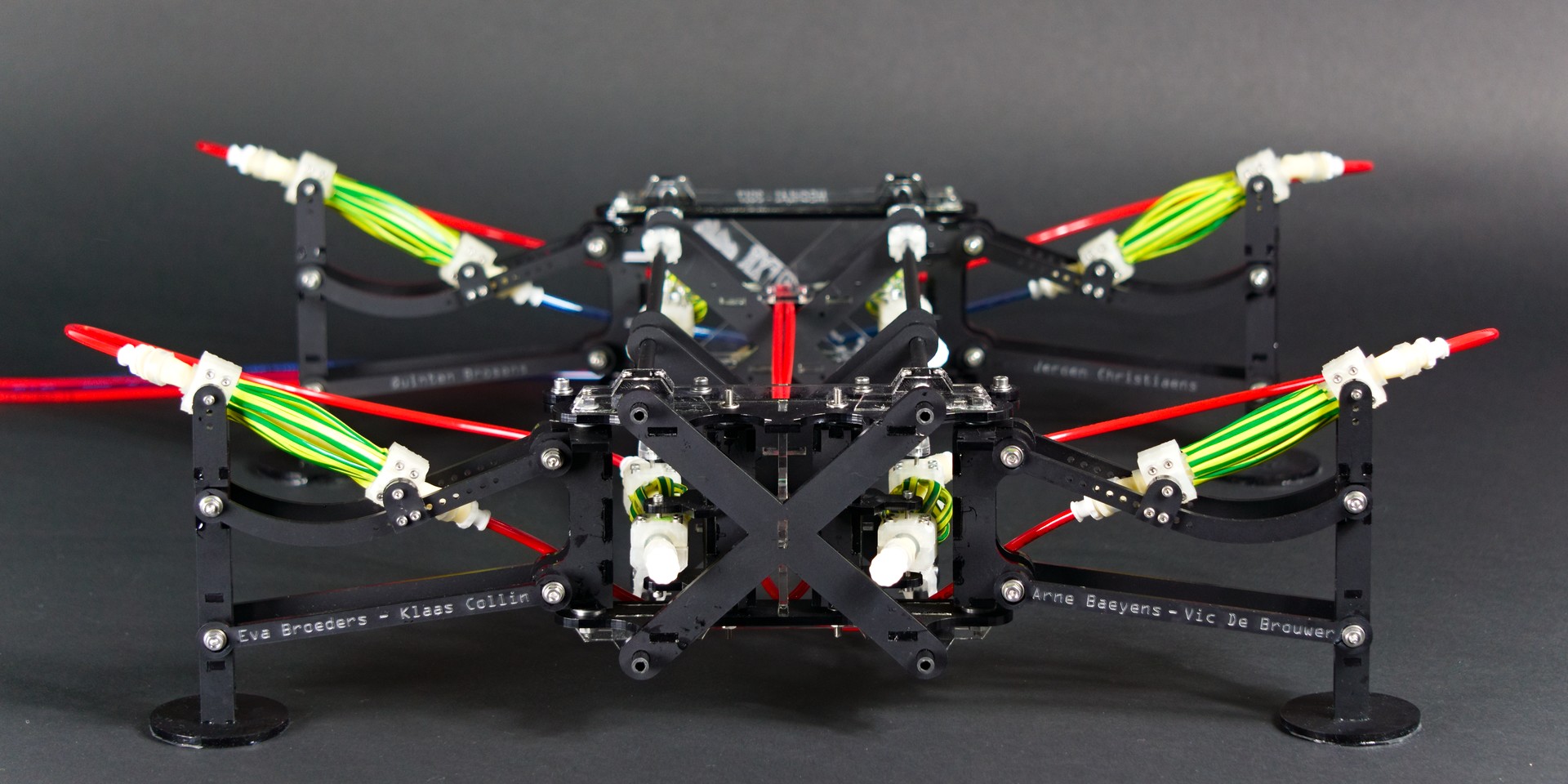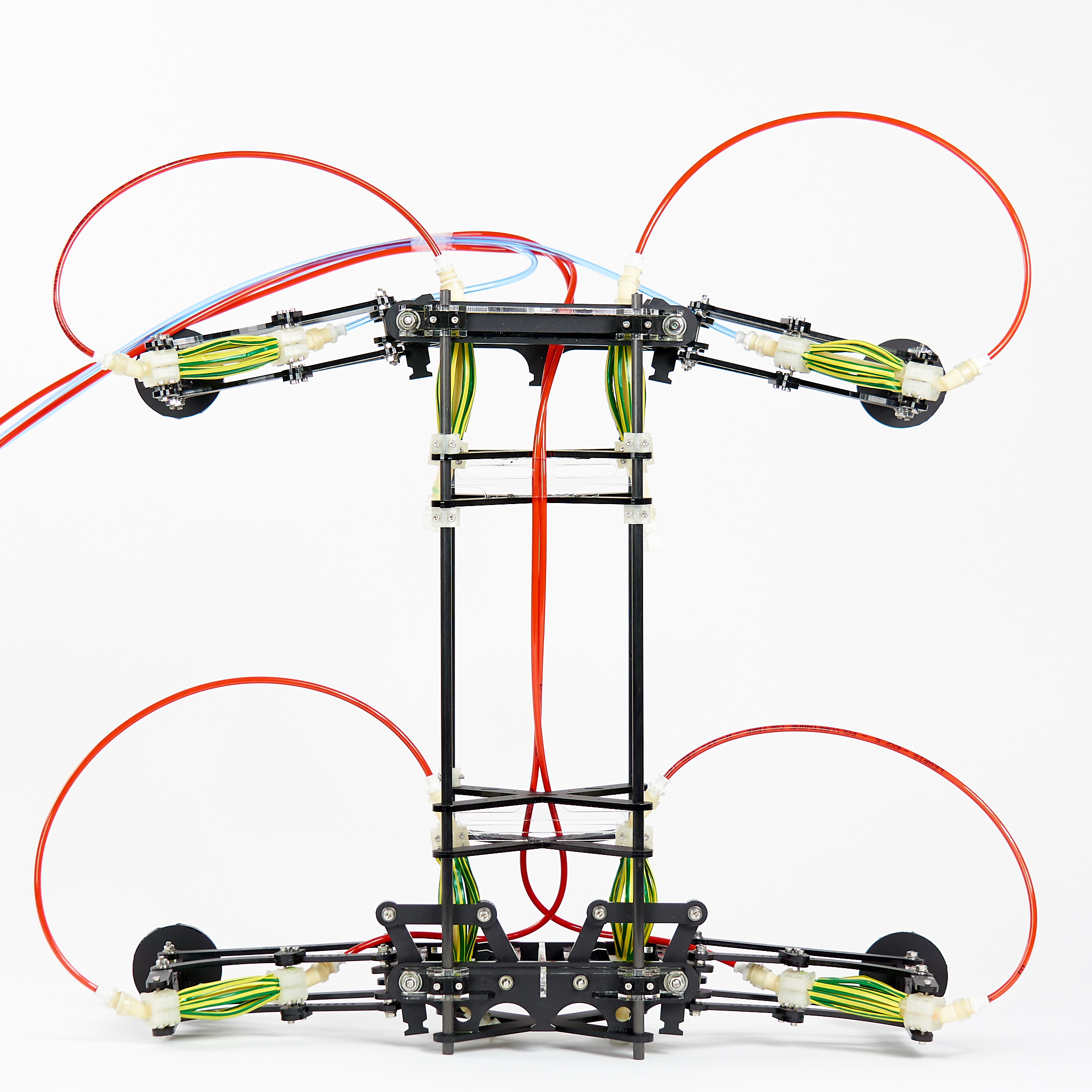Soft Robot
A walking soft robot using nonlinear inflatable actuators
This walking soft robot is the result of a three-month team project that I led as part of the KUL P&O 2 (Problem Solving and Design 2) course in autumn 2017. The project goal was simple: build a walking robot. However, a few constraints made it more challenging: we could only use a single pneumatic pressure source per leg, and no electronics or valves allowed. Additionally, the robot had to be compliant, making it a soft robot.

Our team of six began experimenting with various approaches. The main difficulty was getting the leg make a walking motion under load, which, if two actuators for a leg are used, required an actuation phase shift. In the field of soft robotics, there had been experiments with balloons, which have a very nonlinear pressure-volume (PV) relationship, and thus pressure-extension relationship, as their PV curve shows a peak followed by a valley (local pressure minimum). However, they had not yet been used in a walking robot or under load.
By using the correct flow restrictor between two balloons, it was possible to operate two balloons on a single pressure line in different parts of their PV curve, thereby allowing us to create a very pronounced and stable phase shift under load.


We continued working on this concept, experimenting with balloon sizes, measuring PV curves, developing numerical simulations, designing the skeleton with CAD, and building the robot, all in less than three months. The final result is the walking soft robot shown in the video below, and a publication in the journal Advanced Materials.
I would like to give a big thanks to all the other team members who contributed to this project - Eva Broeders, Quinten Brosens, Jeroen Christiaens, Klaas Collin and Vic De Brouwer - as well as the outstanding assistance from prof. Benjamin Gorissen and Edoardo Milana of Soft Robotics Group Leuven.